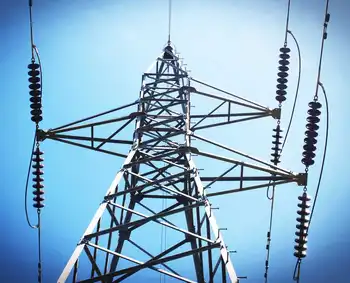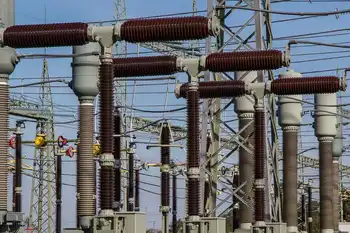Is private money ready to go nuclear?
By Globe and Mail
CSA Z463 Electrical Maintenance -
Our customized live online or in‑person group training can be delivered to your staff at your location.

- Live Online
- 6 hours Instructor-led
- Group Training Available
But it's not yet clear that hedge funds and investment banks are willing to take on the financial risks long associated with the capital-intensive projects that are prone to cost overruns.
As a result, critics worry that it will be ratepayers and taxpayers that continue to bear the risks, while the corporations earn guaranteed returns.
In Canada and the United States, private companies are proposing to finance and own nuclear power plants, and sell the power to utilities. To do the deals, they need utilities to sign long-term power purchase agreements that essentially shift much of the risk from the firms themselves to ratepayers.
Backed by those power purchase agreements, they will then go to capital markets for financing.
In New Brunswick, a consortium of private sector firms led by the nuclear division of SNC-Lavalin Group Inc. is teaming up with Atomic Energy of Canada Ltd. in a plan to finance the construction of AECL's $5-billion ACR1000 reactor.
Ontario-based Bruce Power, as well as the Team Candu group, are also eyeing Alberta as a possible site for a privately financed reactor.
But Mark Winfield, a York University environmental studies professor, said private sector players will only finance nuclear projects if they can shift the risk to the public. He said the power purchase agreements provide the developer with an assured market on an uncompetitive basis.
"Fundamentally, you are transferring the risk to the ratepayer," he said. "You have to guarantee market and commit your electricity market to that technology. That's different from any kind of a merchant notion."
The Team Candu group has not offloaded the risk completely. It will have to spend as much as $30-million for a site assessment, while AECL itself says it will guarantee performance of the untested ACR1000, and insists it will not need federal loan guarantees to do so.
The AECL approach in New Brunswick is similar to the model followed by Bruce Power, a private company that is partly owned by TransCanada Corp. and Cameco Corp. Bruce Power leases the eight Bruce reactors from the province and sells power to the Ontario grid.
It is undertaking a $5.25-billion refurbishment at the plant, an investment backed by the lease agreement and long-term power purchase deal with the provincial utility. While Bruce Power argues it is shouldering much of the risk, Ontario's Auditor-General reported last year that the company has transferred costs to consumers with over-generous agreements.
In a recent study, David McLellan of the Centre for International Governance Innovation in Waterloo, Ont., concluded that would-be builders of nuclear power plants face major financial challenges, especially when faced with competition from coal or natural gas plants.
"In competitive electricity markets, new nuclear plants may not be financially attractive to private investors without government action to tilt the economics in nuclear's favour, at least for first-of-a-kind plants," Mr. McLellan said.
Bryne Purchase, a Queen's University professor and former Ontario deputy energy minister, said there are myriad levels of risk that have to be assessed in a multibillion-dollar nuclear power project, especially when the principal vendor has not completed the design and licensing of the reactor.
In the past, utilities like Ontario Hydro not only purchased reactors but participated in the construction. Backed by provincial taxpayers, they assumed virtually all the cost of construction delays, technology failure and poor performance.
However, in China and South Korea, AECL sold reactors on a "turnkey" basis, in which it would assume the liability for cost overruns. Those projects were completed on time and on budget. AECL is proposing the same approach in Ontario.
"The question on privatization does really focus around risk, whether you actually transfer risk to the private entity," Mr. Purchase said. "Because most private entities (in other sectors) aren't guaranteed to make money."
In the United States, the nuclear industry can reap billions in federal subsidies and loan guarantees to help close the competitive gap with coal-fired and natural-gas-powered plants. According to the industry, some 17 companies and consortiums are pursuing licences to build 31 new reactors in the U.S.
But even with that assistance, utilities and private financers remain wary.
In Texas, Austin Energy, a municipal utility, said it would not participate with NRG Energy Inc. in the New Jersey-based company's plan to build two reactors in the state.
A consultant hired by the Austin utility said the $7-billion (US) project represented an "unacceptable degree" of risk.
In fact, debt-rating agencies like Moody's Investors Service Inc. have warned that vendors routinely underestimate the cost of building a nuclear power plant.
And Wall Street has signalled it is unwilling to underwrite nuclear projects that are not covered by government loan guarantees. Last year, six major investment banks, including Goldman Sachs and Morgan Stanley, told the U.S. Department of Energy that they believed the technology risks, combined with high capital costs and long construction schedules, "will make lenders unwilling at present to extend long-term credit."











